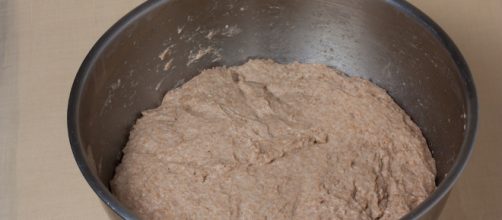In the kitchen, baking is considered to be an Exact Science -- meaning it mandates precision for the success of the recipe used. Hence, the ingredients must be stored, weighed, prepared, and baked with extreme care. However, true bakers know that there are alternatives and even compromises with baking. Whether it's the ingredients chosen or the methods in which they are prepared, a true baker can practically get away with altering or even omitting them. The thing is, these so-called baking hacks are usually hiding in plain sight. In fact, some are lurking within the very Foods and items found in the kitchen.
Here are five baking hacks that all up-and-coming bakers must learn.
5. The no-knead bread recipe
Making bread is beyond a chore as the process of making and preparing dough requires precision throughout. Formulas aside, the real trouble lies in the kneading process; a not-so-exact science that has caused many amateurs to go bald in their pursuit for even the most basic bread.
Kneading is all about working the dough with hands until it reaches the right consistency for leavening. It can take somewhere between 5 to 7 minutes and could easily come undone within that time frame if not done right. Too much kneading and the dough will be too tough to flatten and fold. Too little and the dough won't rise as it should.
Plus, all that kneading can be sheer torture on a person's hands. Fortunately, there's a way to avoid this trip to baker's hell; self-rising yeasts. Thanks to this marvelous innovation, a baker can skip this painstaking step in bread making.
All that is required is to substitute the regular yeast with the self-rising yeast in the formula, combine and refrigerate overnight. By the next day, the dough should be ready for dividing, shaping, and above all; baking.
4. No buttermilk, no problem
Buttermilk isn't always easy to come by, especially if those who need it just happen to live in certain countries that don't produce or even import it. Bakers require this dairy product because it not only provides moisture for some of their baked goods but also tartness (buttermilk is also acidic).
True bakers know that there are substitutes out there. Or perhaps even close by. If the baker has access to regular milk, he/she is only an acidic ingredient away from making a substitute to buttermilk. There are in fact three acidic ingredients to combine with the milk and turn it into a proper buttermilk substitute. The first and easiest one is lemon juice; one tablespoon mixed with one cup of the milk should do the trick.
The second one is vinegar and the ratio is the same as the lemon/milk combo. And finally, the third one is yogurt. However, this last one requires a 1:1 ratio. Hence, one cup of yogurt mixed with one cup of milk will be enough for your substitute.
3. Hard butter vs. warm glass
Often, bakers use a microwave to soften butter that they left in the fridge too long. But, let's say the microwave had a little accident or wasn't readily available. This could cost bakers critical time and money if a business is involved. They could try the oven but that's for the sake of the sarcasm in this article.
Instead, they should try this simple trick: Place the butter on a flat plate, then trap it within an upside down warm glass. Like a microwave, the warm glass will confine the butter in a small area and the surrounding warm air will soften it within mere seconds. The trick is well known to experienced bakers who want to save on their power bills.
2. Grated butter for flakier pie crust
Some professional bakers actually find making shortcrust pastry to be quite challenging. That is if they are trying to make the flakiest pie crust to wow a crowd. True to a fault, pie making can be strenuous since it proves that baking is indeed an exact science. The ingredients have to come together in a precise way to achieve a proper crust for the pie.
For example, the fat needs to stay cold within the dough before it enters the oven or it will melt, eliminating gaps for the steam to rise throughout the dough to achieve a really flaky crust. However, for those who are reading this article, there is a way to hack even the flakiest of pie crusts. Enter the cheese grater.
True bakers who want a super flaky crust use this trick as it has been proven to yield the best results. For this to work, the fat needs to spend some time in the freezer before the operation. When it's solid enough, the baker can then run it through the grater to make fine shavings that will mix well with the flour. Afterward, they can wrap the flour/butter mixture back into the freezer to chill before adding the liquid to finish.
1. No rolling pin, no problem
This last one is a well known and simple trick but should be done with great care. Among the essential tools of a baker, there are those classified as mandatory. One such tool is the rolling pin, considered a pastry chef's best friend.
But, there is a substitute right at home that not only is shaped the right way, it also comes in different sizes for the job. If the baker or chef has dough that needs to be rolled out, then a plain empty bottle should do fine. Wine bottles especially make for great rolling pins because they are large and durable enough for the job. However, great caution should be taken when using a bottle this way. Therefore, the baker should check for any damage like scratches, cracks, or chips, and clean it thoroughly before and after use.


